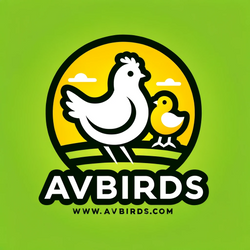Picture this: you’re opening the brooder to meet a fluffy bunch of Buff Orpington chicks. They arrived just days ago and they’re already stealing your heart. Is this your first time raising chicks? Don’t worry, you’ve got this. In this guide, you’ll learn how to set up their brooder, feed them right, and catch early health signals so they grow into robust, friendly adults. And if you’re still hunting for quality little birds, check our day-old chicks for sale.
These stately, poofy balls of fluff flourish in cooler weather thanks to their thick feathers (Backyard Chickens). As they grow, you’ll see hens close to eight pounds and roosters tipping the scales at ten or more (Ranchr). Ready to dive in? Let’s get started.
Prepare Their Brooder
Select Brooder Supplies
Before your chicks arrive, gather sturdy essentials:
- A heat lamp or brooder plate for consistent warmth
- A secure brooder box (plastic tub or plywood pen works)
- Non-slip bedding (pine shavings, not cedar)
- Feeder and waterer sized for chicks (avoid deep trays)
If you need a full kit, browse our chick brooder supplies. Having everything in place means less stress for you and your new fluffballs.
Set Temperature and Bedding
Chicks need a warm, dry space to thrive. Use the table below as a guide and adjust the lamp height to maintain these temps:
| Week | Brooder Temperature |
|---|---|
| 1 | 95°F |
| 2 | 90°F |
| 3 | 85°F |
| 4 | 80°F |
| 5 | 75°F |
- Lower the temperature by about 5°F each week
- Watch your chicks’ behavior—if they huddle under the lamp, they’re cold; if they stay away, they’re too warm
- Keep bedding clean and dry, replacing soiled shavings twice a week
Provide Balanced Nutrition
Choose Starter Feed
Your Buff Orpington chicks need a high-protein starter feed (18–20% protein) for strong bones and feathers. Opt for medicated feed if coccidiosis is a concern, or non-medicated if you prefer more natural approaches. Always offer feed in a shallow dish so chicks can reach it easily without getting trapped.
Ensure Fresh Water
Hydration is critical—chicks can dehydrate in under a day.
- Use chick waterers with a guard to prevent drowning
- Change water twice daily to keep it clean
- Add electrolytes or probiotics (optional) to promote gut health
Keep the waterer close to the heat source so babies don’t venture into colder zones just to drink.
Maintain a Clean Environment
Spot Clean Daily
You’ll notice droppings pile up quickly. A quick daily sweep of the brooder floor prevents ammonia buildup and reduces disease risk. Remove wet or caked bedding and replace it with fresh shavings.
Replace Bedding Weekly
Even with spot cleaning, plan a full bedding swap once every week. This keeps mites and bacteria at bay. Before adding fresh material, give the brooder a gentle scrub with warm, soapy water. Rinse thoroughly and let it dry completely before reassembling.
Monitor Chick Health
Watch Behavior and Growth
Healthy chicks are active, curious, and peep softly as they explore. Each day, glance at:
- Feather development (fluffy down to pin feathers)
- Body weight and size—expect steady gains
- Droppings (normal paste-like or slightly runny)
Spot Early Warning Signs
Chicks can fall ill fast. Look for:
- Lethargy or huddling away from heat
- Ruffled feathers or labored breathing
- Pastel or bloody droppings
If you spot anything off, isolate the chick and consult a poultry-savvy vet or experienced keeper. Early action often means a full recovery.
Transition to Outdoors
Move to Starter Coop
At 6–8 weeks, most Buff Orpingtons outgrow the brooder. It’s time to shift them into a protected starter coop or chick tractor. Ensure:
- Roosting bars are low to the ground
- Nest boxes are clean and accessible
- Predators cannot reach through wire mesh
If you plan on integrating them with older birds, introduce them gradually to avoid bullying.
Introduce Free Range Time
Buff Orpingtons are excellent foragers and love stretching their legs outdoors. On mild days, let them roam a fenced yard. Monitor for threats like hawks or dogs. Over time, they’ll learn to find bugs, greens, and grit, boosting their nutrition and your self-sufficiency.
Key Takeaways
- Prepare a warm brooder with proper bedding and a steady heat source
- Offer high-protein starter feed and fresh water daily
- Keep their space spotless with spot cleaning and weekly bedding swaps
- Check behavior and droppings to catch health issues early
- Transition them to a secure starter coop, then let them free range when ready
Your Buff Orpington chicks are social, cold-hardy, and poised to become friendly backyard lay-and-meat birds. Next step? Share your own chick-rearing wins or questions in the comments below—your tips could help someone else thrive too.

